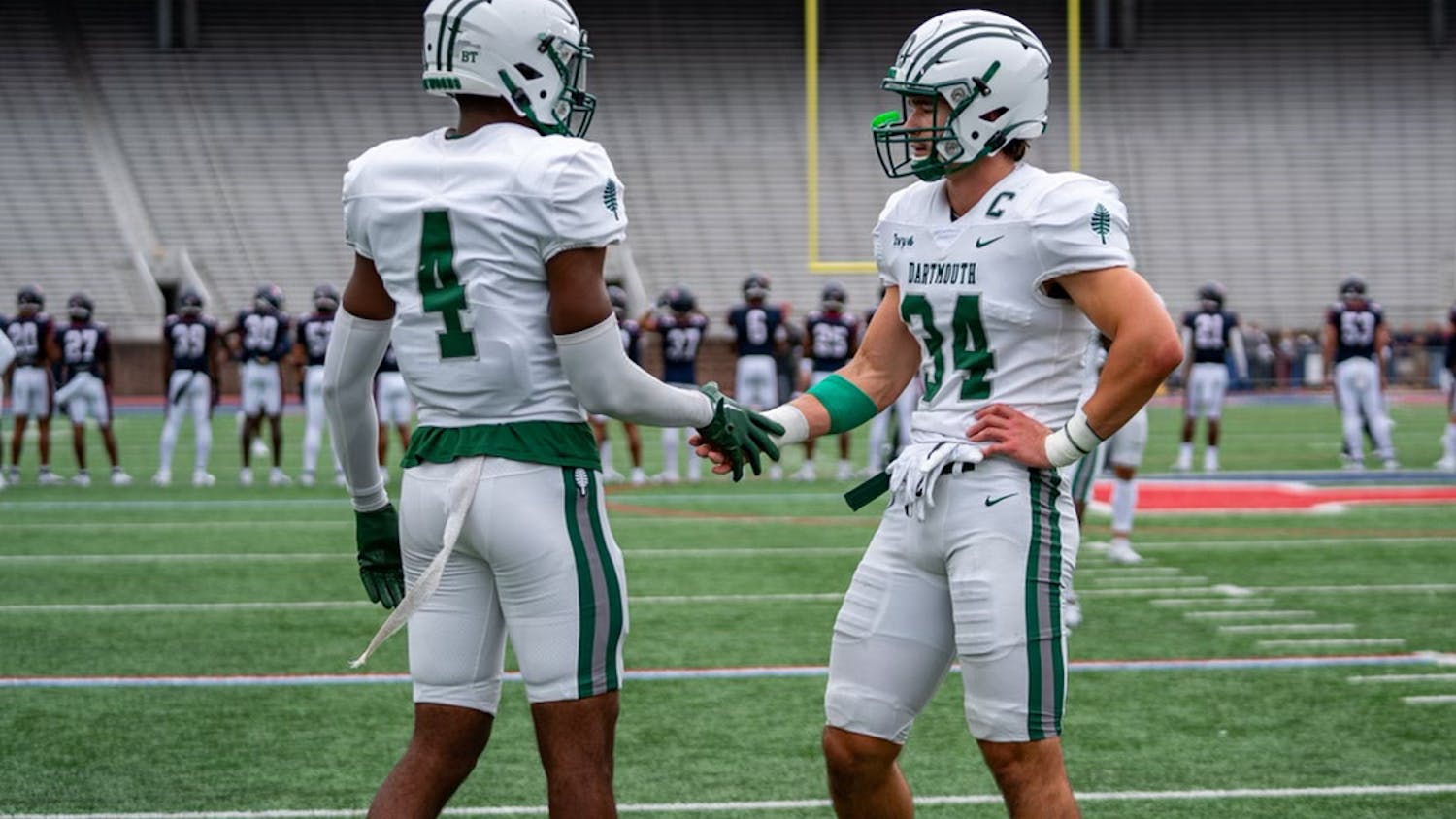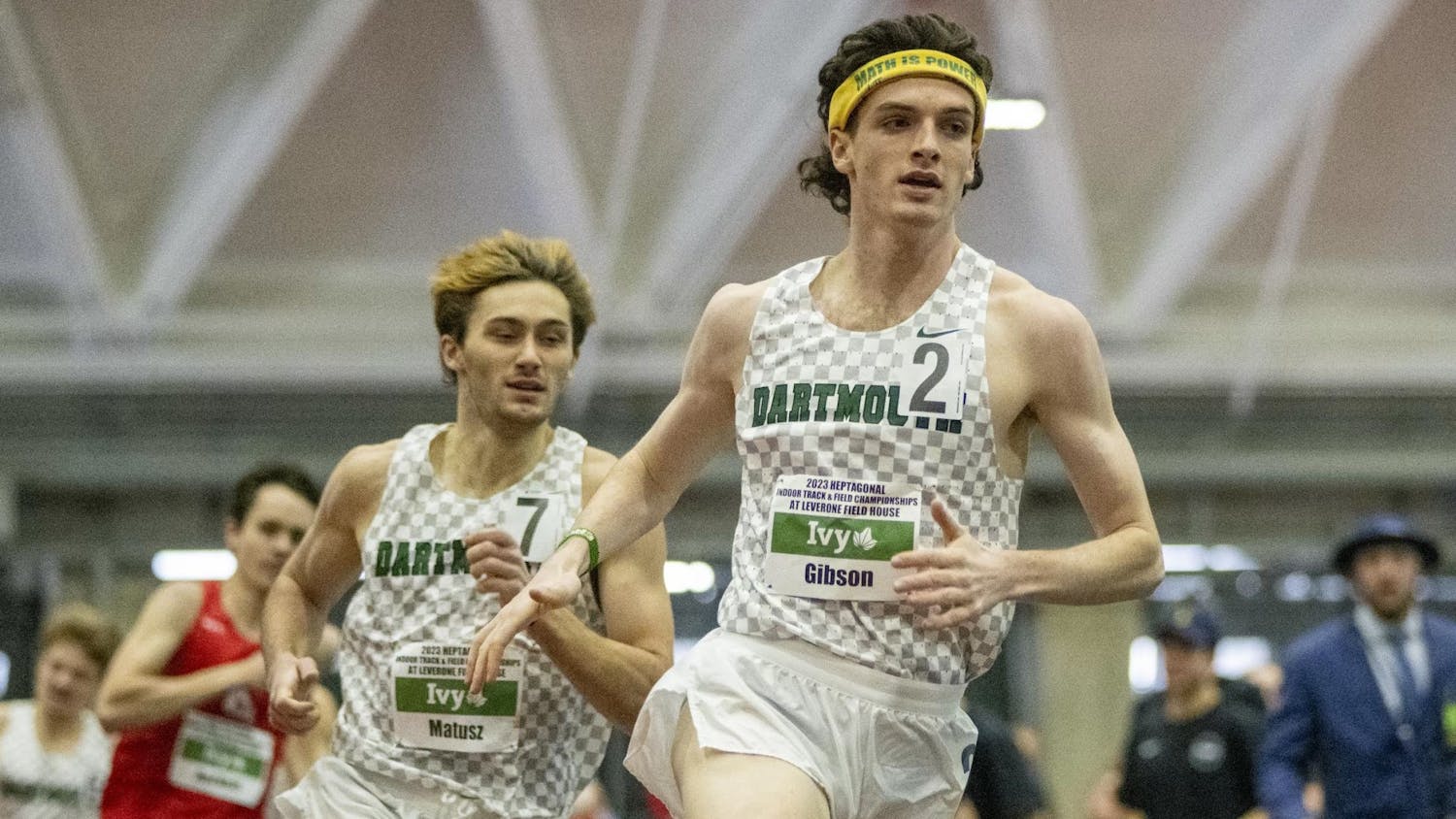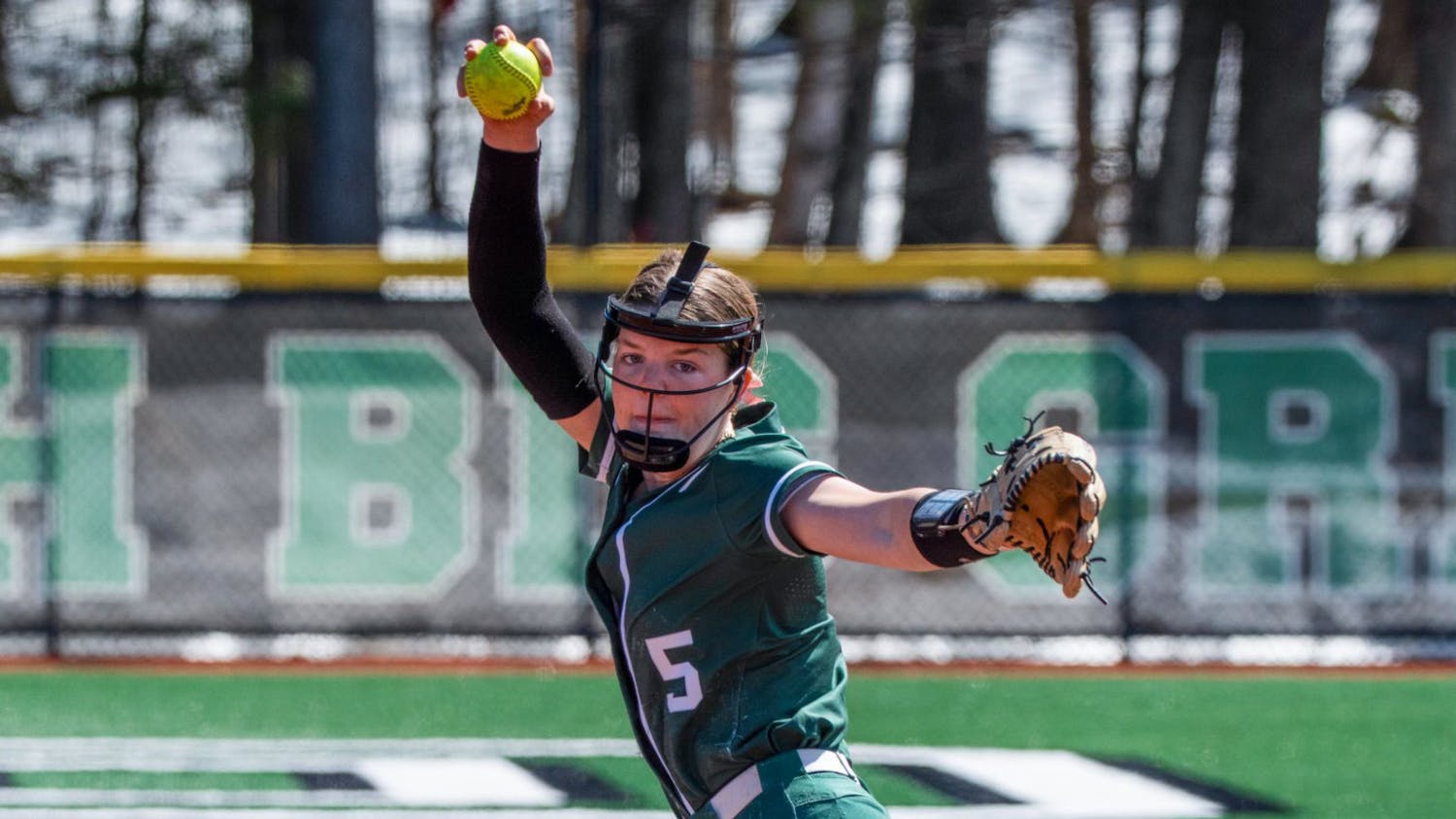The men’s basketball team totaled a season high of 85 points in an explosive affair featuring uninhibited shot-taking and swift possession changes that contributed to more scoring opportunities for both teams.
Despite trading buckets with host Fairfield University for most of the game, the Big Green (4-8) could not hold off the Stags’ (7-6) three-point barrage and failed to maintain the brief lead it took in the second half, losing by a score of 97-85. Dartmouth could not force nearly enough stops on the defensive end, yielding 97 points to the Stags — the most an opponent has scored since 2011.
Evan Boudreaux ’19 continued an excellent freshman season in adding 18 points, doing all of his work inside the three-point line and mainly on drives to the basket. Forward Connor Boehm ’16 enjoyed his best offensive game of the year, leading all scorers on the floor with 24 after jumping out with 15 in the first half. The senior added seven rebounds to his ledger — tied for the most by the Big Green — as well as the most offensive rebounds among all players.
“I thought [Boehm] was very aggressive,” head coach Paul Cormier said. “He hasn’t been as aggressive as that offensively in some time. Aggressive isn’t just taking more shots, aggressiveness is posting up hard, feeling for the ball low, [using] his post moves.”
On the other end, a balanced but lethal sharpshooting attack keyed the way for Fairfield, extinguishing any chance Dartmouth had at a comeback bid. Marcus Gilbert, Tyler Nelson, and Jerry Johnson all posted at least 20 points and as a group accounted for all but one of Fairfield’s 12 three-pointers.
Perhaps the most pivotal aspect in the game was the three-point shooting by Fairfield. Coming into Monday’s matchup, the Big Green knew the three-point shot represented a hallmark of its opponent’s offense. Prior to the game, the Stags had a season three-point attempt rate of .429. Nevertheless, even the three-point onslaught that unfolded in the first half seemed astounding.
That three-point rate dramatically shot up to .647 with 22 three’s attempted in the opening 20 minutes, nearly up to Fairfield’s then season average of 26.5 in just one half of action. Done without hesitation and often with plenty of time on the shot clock, the shots from outside the arc oftentimes seemed rushed and unwarranted, as many of them came off as poor and tightly-defended looks at the basket.
But although the three-point shooting proclivity bordered on reckless at times, it all the while maintained efficiency for Fairfield. A .364 three-point percentage in the first half was nearly identical to the team’s usual mark — .365 on the season — and thus indicated that while the obscene amount of three’s taken might have seen jarring and superfluous, the payoff was still intact. What was once a ten-point lead, however, slimmed down to three at halftime as Dartmouth trailed 41-38.
“Our goal coming into the game was to slow them down and not play to their tempo,” Boehm said about defending the opponent. “Unfortunately, they got out and they were hitting their three. What we talked about during the game was to run them off the three-point line. We’ll let them drive in the paint. We didn’t want them to get any good looks [from outside]. Unfortunately they got too many good looks and we were not able to slow them down and it resulted in a loss.”
In the second half, Fairfield’s three-point attempts slightly dissipated, as the home side took just eight three’s — four fewer than Dartmouth’s total attempts in the same span — but still ultimately finished the game shooting .400 from outside the arc.
Moreover, the Stags’ three-point stroke often dictated the course of the game in terms of its closeness. Whereas cold stretches by Fairfield from three-point range allowed Dartmouth some room to creep back, once the Stags regained their outside touch they restored their lead as well.
As part of this offensive strategy, Fairfield also instilled a rapid tempo in the game.
“It’s not so much just the three point shooting,” Cormier said. “It’s the tempo that they want to play. They want to play very fast. They’re very athletic. They’ve got a lot of good perimeter shooters.”
Despite falling behind by double-digits five minutes into the first half, a strong rebounding effort — especially in the first half — marked one of the key reasons Dartmouth forced a closer game.
Furthermore, generating several second chance opportunities was a crucial outgrowth of Big Green dominance on the boards. Fourteen minutes into the night, Dartmouth had already collected nine offensive rebounds. In the possessions immediately following, the team scored 12 easy points.
Such success with offensive rebounds continued into the second half, as by the end of the night the Big Green led their opponents in that category 16-7. In total, Dartmouth out-rebounded Fairfield 39-27 — the same rebound differential after the first 20 minutes of play.
For Cormier, this advantage did not necessarily translate to stronger control of the game.
“[At] some times the offensive rebounding was good.” Cormier said. “But a lot of that has to do with the fact that they’re getting out. They’re not sending many people to the defensive boards. They’re getting out because they want to score in a hurry. I was pleased with the rebounding [and] the aggressiveness, but we did get caught in allowing them to get some easy baskets in transition.
As Fairfield attempted to distance itself in the second half, Dartmouth hardly let up, cutting the margin down to one point on several occasions. Finally, a layup by Boehm just over 12 minutes into the second half gave the Big Green its first lead since the first basket of the game. That make came amid a hot streak for Boehm, who converted his shots on his third consecutive possession.
“We always play hard, game in and game out, that’s definitely part of it,” guard Miles Wright ’18 said about the effort to remain competitive on the scoreboard with Fairfield. “But playing hard isn’t always enough to get you the amount of wins that you need. I think that a lot of people stepped up. Connor Boehm, he really stepped up and had a great game. His intensity and leadership throughout the game kind of inspired others to play harder than they normally would.”
Yet within seconds, the Stags countered back to regain an advantage and a Johnson three-pointer permanently returned a multi-possession lead as the final field goal in a seven-point run for Fairfield. Over a five minute stretch as the game wound down, Fairfield went on a 17-7 run that extended its lead to 14 — the largest of the game — and effectively put the game to bed.
“When it gets to be five minutes left in the game, you have to decide, ‘are we going to lose by eight, because we’re just trading baskets, or are we going to try to press them and see if we can create some turnovers?” Cormier said. “We went after them and did get some turnovers, but we sped up the tempo a little bit and that’s more into what they want to do and we weren’t able to close the [scoring] gap.”
Reflecting on Monday night’s contest, Boehm noted the uniqueness in facing the offensive style that Fairfield employed.
“I don’t think we’ve [ever] played a team quite with this strategy that they had,” Boehm said. “A lot of the teams we play especially in the Ivy League are more conventional in their offenses. They’re going to work the shot clock down to get a good shot, run through their numerous offensive sets. [Fairfield] was different in the way that, if they have an open shot, no matter what it is, they’re going to take it. So I can’t say we have played a team [like that] probably in my four years.”
The Big Green will open Ivy play this Saturday against Harvard University in Cambridge, Mass. at 2 p.m.
The original article stated that the rebound differential was almost the same after the first half as it was at the end of the game. The differential was exactly the same. This article has been edited to reflect those changes.



